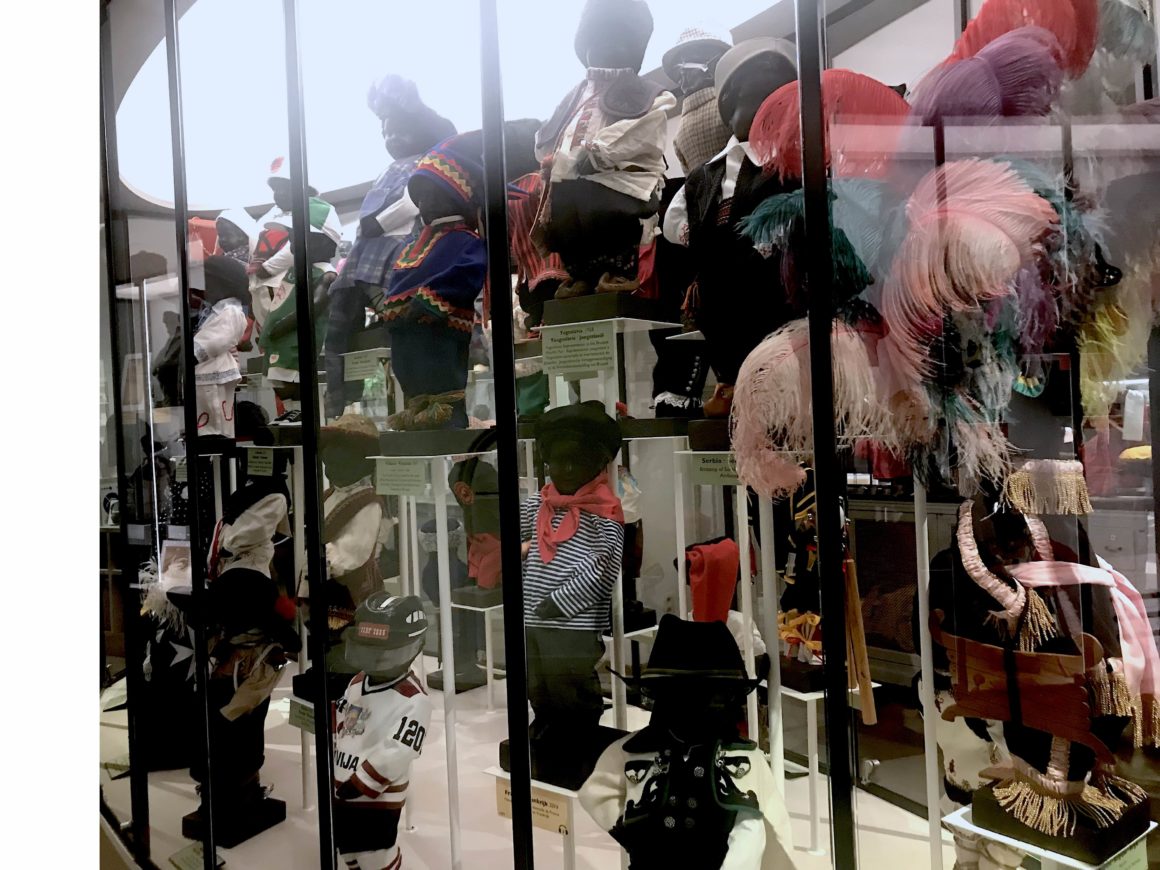Tourism is one of the major industries in nowadays world. And heritage tourism is one of the main exponents. Every well-known city must have a few landmarks that tourists can pose for pictures to prove they have been there. Some of these landmarks are old and with a well-known history like the Parthenon in Athens; others are more recent, like the Eiffel Tower in Paris. Some are big buildings and monuments, like the Brandenburg Gate in Berlin and others are small, like the Little Mermaid in Copenhagen. And many, many of them, are fountains. There are famous fountains in Spain, like La Cibeles in Madrid; in Italy, like La Fontana di Trevi in Rome; or in Belgium like Manneken Pis in Brussels.
But Manneken Pis is not only a cute background for pictures. This little fellow has brought pride to the Brussels inhabitants for some centuries already and its importance goes further than the little statuette….
The Fountain and the Statuette
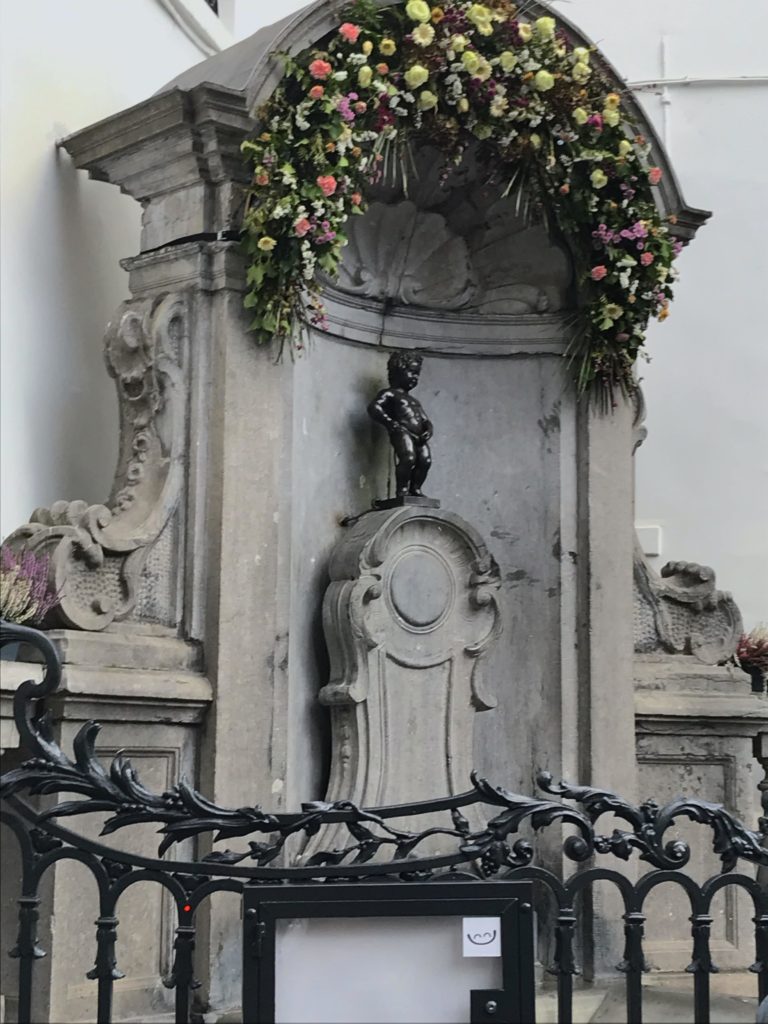
The Manneken Pis (or little peeing boy if we translate it from dutch), is a little statuette on top of the fountain of the same name in the city centre of Brussels. This little dude has been providing water to the inhabitants of Brussels since, at least, 1451, when it is first mentioned in an official document about the water lines of the city. The origin is not really clear, even though multiple legends are telling the story of its origin. Although they are all different, all of them share a common factor, a little boy peeing for one purpose or another.
The fountain was, at first, different. In 1619 the statuette was changed to a bronze one. In 1697 the location was changed. In the beginning, the statuette was located on top of a column, that was changed for a niche in 1770. In 1851 the railings we can see nowadays were added. And in 1965, after the statuette was stolen, the original from the 17th century was retired to the Brussels City Museum, and a copy, made from a 1630 mould, was put in its place.
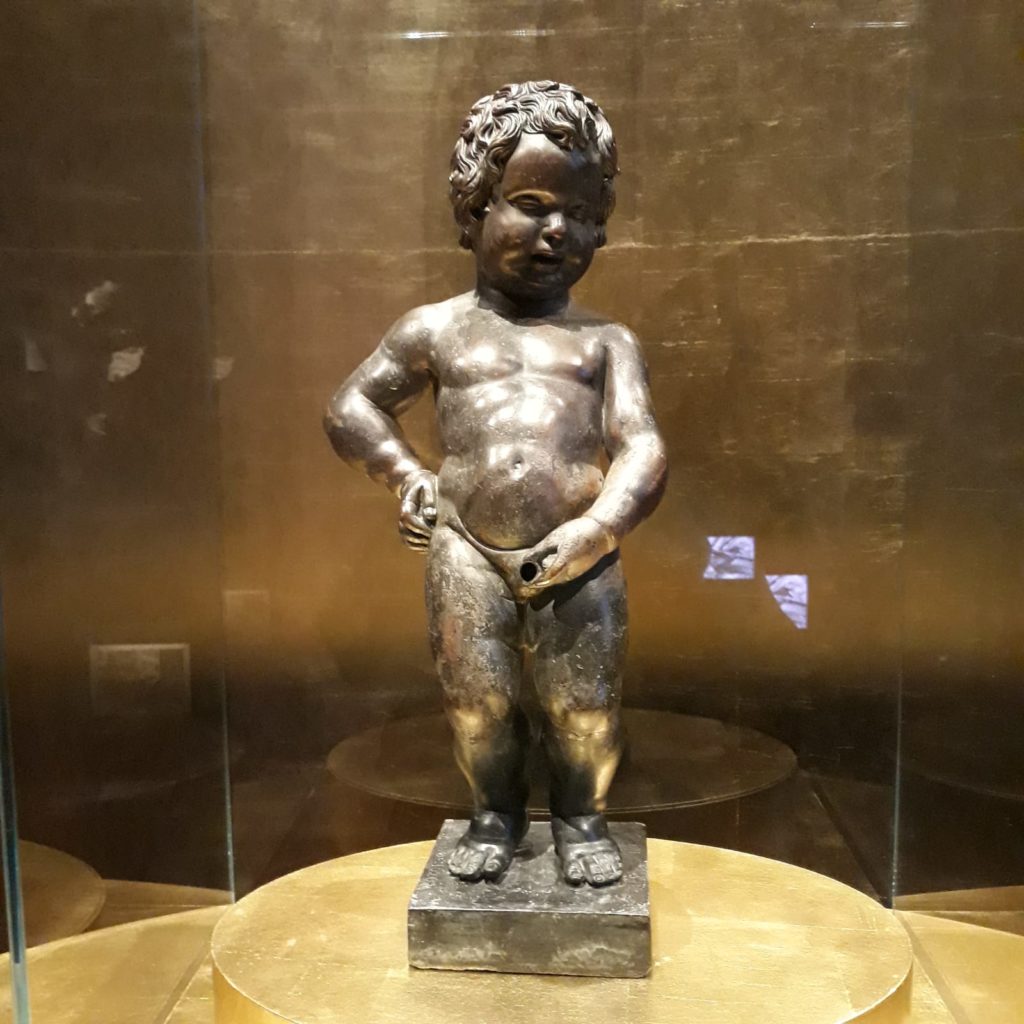
Manneken Pis is not only important for being a water source, it has been a symbol of the Brussel people since the 18th century. At that time, it survived the French bombing of the city and was adopted as a resistance symbol.
And its fame did not stop growing. In the 18th century was already known as a symbol of the city of Brussels. And during its history, it has been stolen, or attempted to, several times, according to word on the street, a total of seven.
The Wardrobe
Manneken Pis seems quite important and relevant on its own, and that is true, but, there is a custom that has created a landmark within the landmark; heritage within the heritage: its wardrobe.
Manneken Pis counts with a wardrobe of more than 1000 outfits that keeps growing every year. And every costume is worn at least once by the statuette.
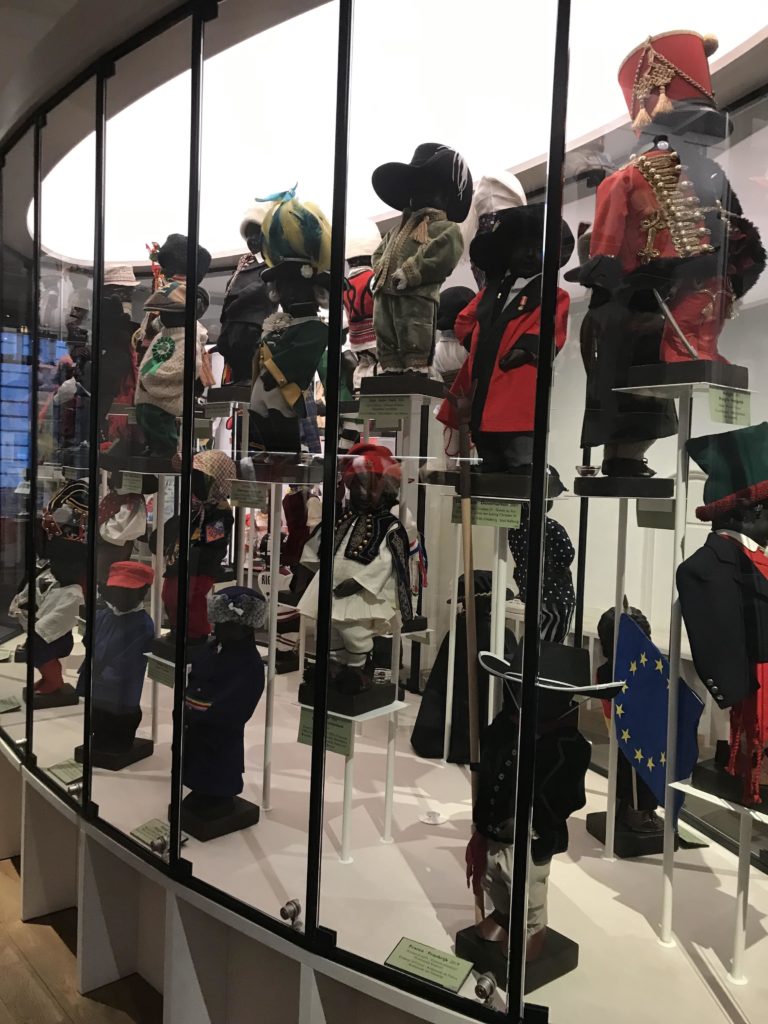
The first time that we know of Manneken Pis being dressed up is in a painting of 1616 “The Triumph of the Archduchess Isabella by Denis van Alsloot, where the statuette can be seen dressed up as a shepherd.
But, where do the outfits come from? They are donations. Donations from associations, organizations, companies, cities, regions, countries…
The first one was donated by the french king Louis XV after his soldiers stole the statuette in 1747. This outfit is so remarkable and old, that to prevent its damage it is kept safe and the one that can be seen now is a replica. Heritage within the heritage, creating replicas for replicas.
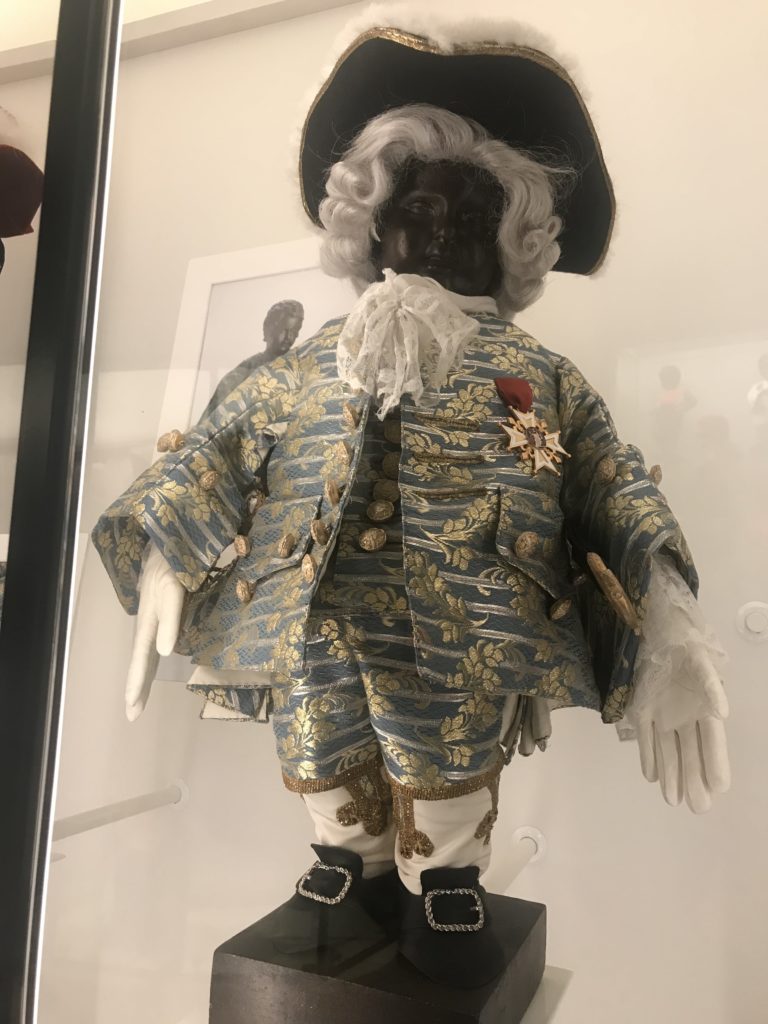
The last one, at the time of my visit in November 2021, was a costume of a Mine Clearing Expert. The last costume currently, according to the Manneken Pis website is a black t-shirt and pants with the Rolling Stones logo, donated in July this year by the group to commemorate their 60 years tour.
If you travel to Brussels for more than one day you most probably will see the Manneken Pis showing one of his outfits, but if you want to know and see more about the collection of this little man there is a museum, called the wardrobe, where you can find a multitude of the donations. If travelling to Brussels is not in your plans right now, do not worry, the wardrobe of Manneken Pis can be found online, and you can entertain yourself discovering the outfits of this little guy, I have shamelessly spent quite some time exploring it.
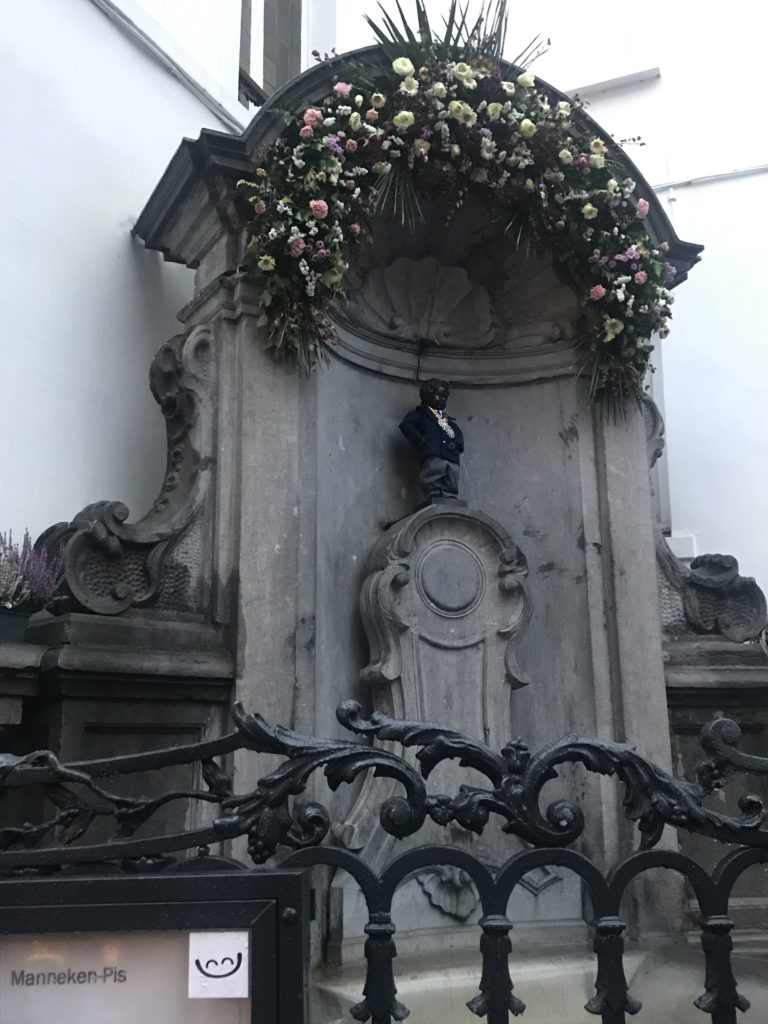
And if you want to see one of them in real life nothing harder than to check its calendar, this little guy seems to have a website for everything, and the schedule of its outfits would not be less.
Heritage within heritage
Wondering about the Wardrobe Museum, and on the website, I started to think about this idea of heritage on heritage and its influence on and by popular culture.
The fountain and statuette of Manneken Pis are heritage in themselves. Even with all the renovations and changes, being the last one the retired of original bronze figure in 1960, more than 60 years ago already.
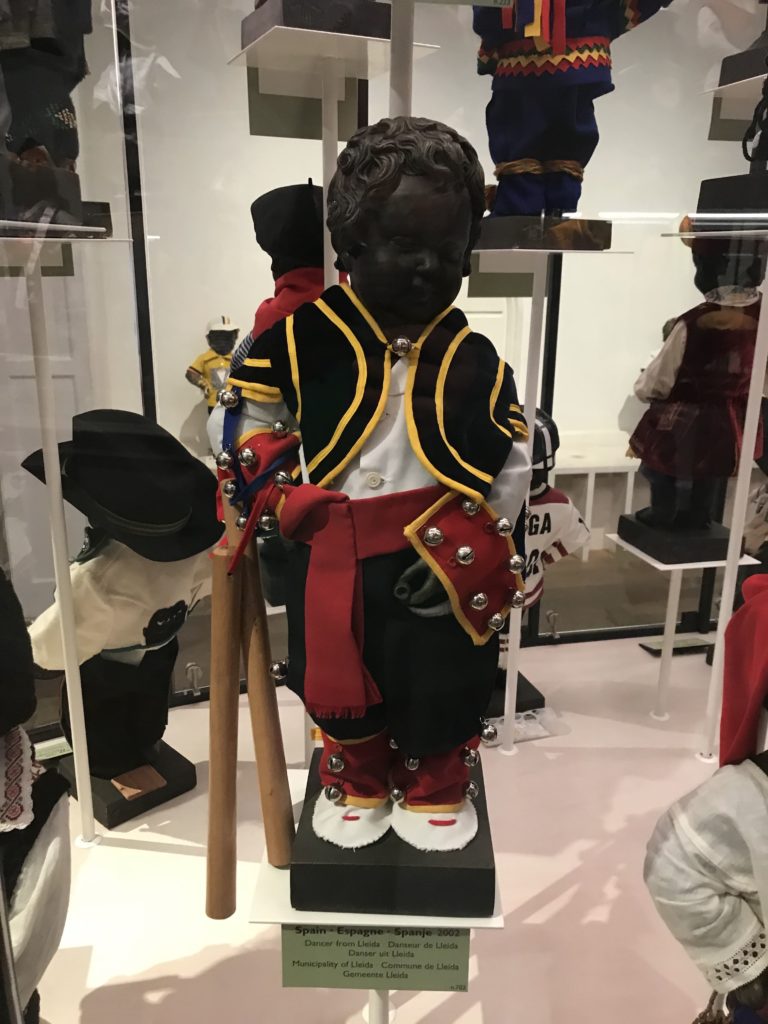
Added to the history and importance of this monument is the heritage its outfits represent. Some of them, are only heritage as being part of the Manneken Pis wardrobe, as could be the football outfits. But others, include different layers of heritage to such a tiny monument.
The costume donated by Louis XV is a historical piece and is treated as such. The gifts of traditional costumes from countries around the world show different heritage aspects of those countries’ cultures. Even costumes like the Obelix one showcase the popular culture of Europe in the last 60 years. And, as well, some costumes, already commemorate historical marks, like the outfit number 1000, donated by the Brussels’ Atomium to commemorate the anniversary of the world fair in 1958.
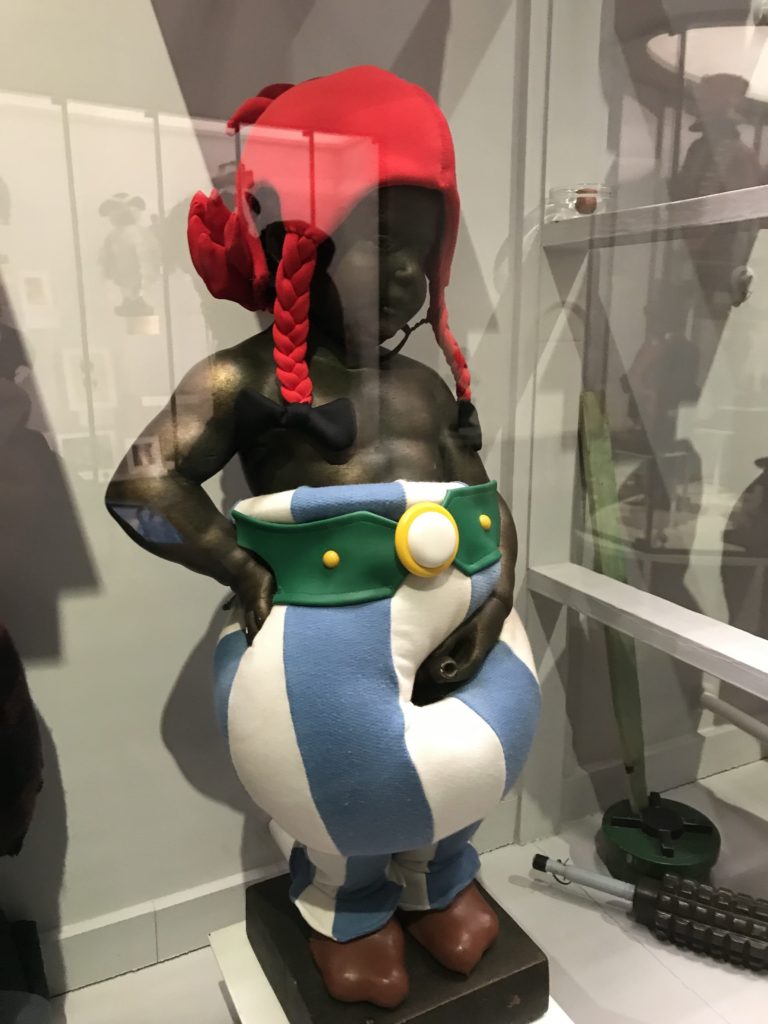
Costume for Manneken Pis as Obelix / Photo: Aida Loy 2021
Sometimes heritage does not have to be big to be a great sample of many ideas, cultures, times… Sometimes a peeing kid of no more than 55cm can show us heritage from all around the world and since the 18th century in just a tiny outfit.
XXXXXXXXXXXXXXXXX